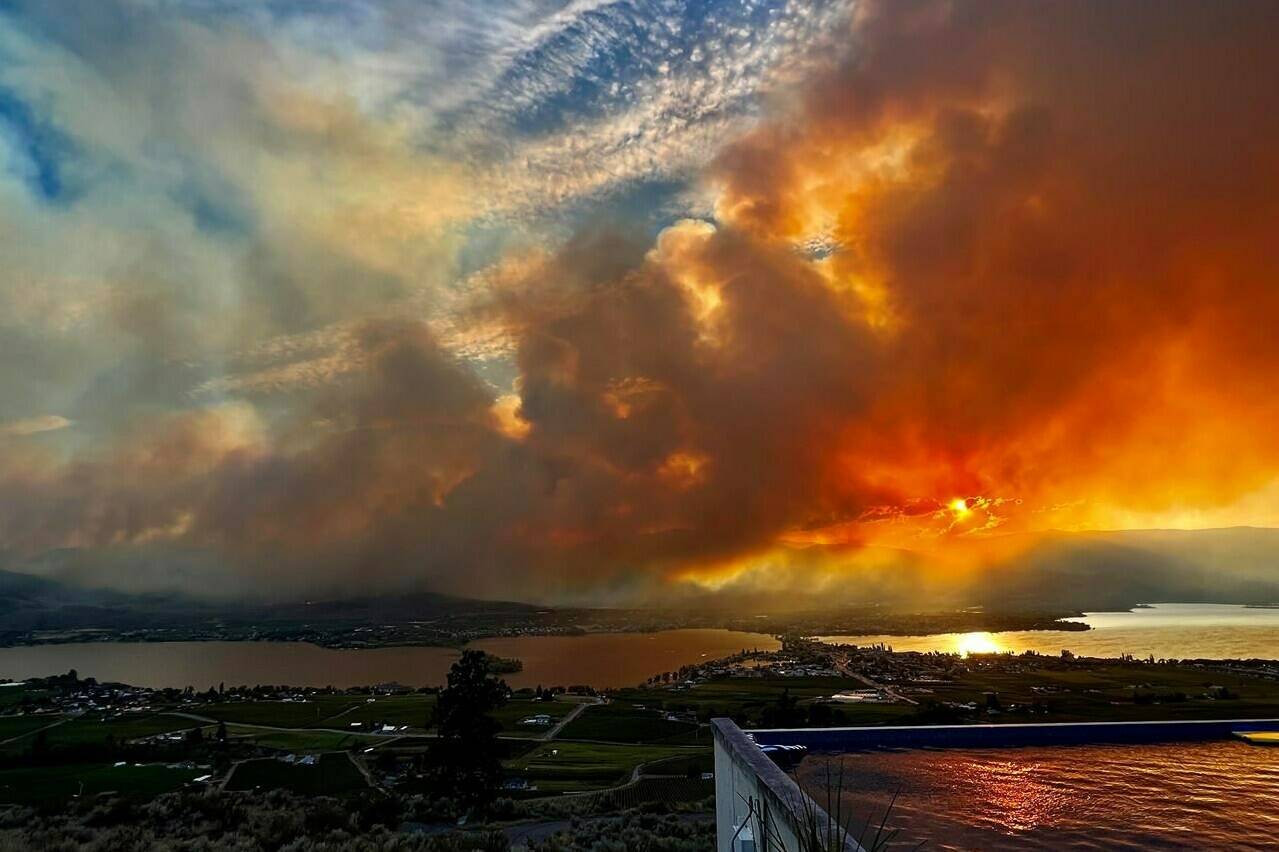A cooling trend with potential rain showers across much of British Columbia is expected to ease wildfire conditions for the next 36 to 48 hours, but hot, dry weather is set to return by the end of the week.
The immediate forecast is welcome and will temporarily ease wildfire suppression efforts, BC Wildfire Service information officer Erika Berg said in an interview.
It ranges from spotty showers in the southwest to steady rain in the north, with fewer lightning strikes and cooler temperatures provincewide.
There are currently 417 active wildfires in B.C., with 220 out of control and 14 listed as wildfires of note.
The wildfire service classifies a fire of note as one that is especially visible or poses a threat to public safety.
“We’re seeing a bit of a downturn in weather and fire conditions over today and maybe the next couple of days,” said Berg on Tuesday. “However, near the end of the week we’re anticipating a ridge to rebuild and bring some further warming and drying. So, despite seeing a bit of a reprieve we’re not out of the woods yet.”
Lightning remains in the forecast, with the heaviest risk in the northeast, but the current weather is reducing the likelihood of lightning-caused wildfires, she said.
“It’s not like we’re looking at (the same) dry lightning potential,” said Berg.
The forecast comes after crews faced a busy long weekend that included evacuations and dozens of new wildfires, largely attributed to lightning.
All evacuation orders have now been lifted around the southern British Columbia community that saw a wildfire burn to its doorstep late last month as flames swept north across the border from Washington state.
The Regional District of Okanagan-Similkameen has rescinded its state of local emergency as well as all evacuation orders related to the nearly 71-square kilometre Eagle Bluff wildfire just west of Osoyoos.
More than 130 properties in or around the southern Okanagan community have been evacuated since the fire jumped the border on July 29, but the orders have been eased as the BC Wildfire Service says the blaze is no longer likely to spread.
Evacuation orders have been downgraded to alerts and the regional district says homes that were previously on alert are cleared of further restrictions.
At the height of the emergency, evacuation orders covered more than 700 properties while 2,000 more were on alert as strong winds blew the fire toward Osoyoos, but a shift in winds the next day veered flames away from the town.
READ ALSO: Rain, cooler weather could bring relief to B.C. wildfire crews as new fires start
READ ALSO: Uto Wildfire grows to almost 2000 hectares in Glacier National Park near Revelstoke

